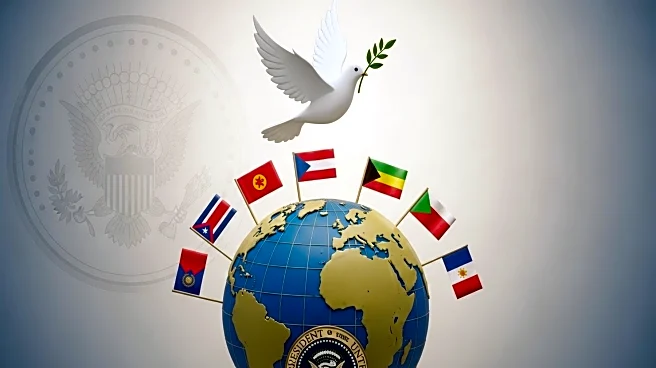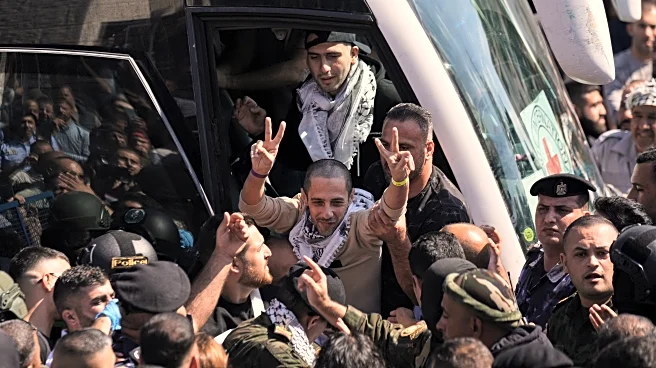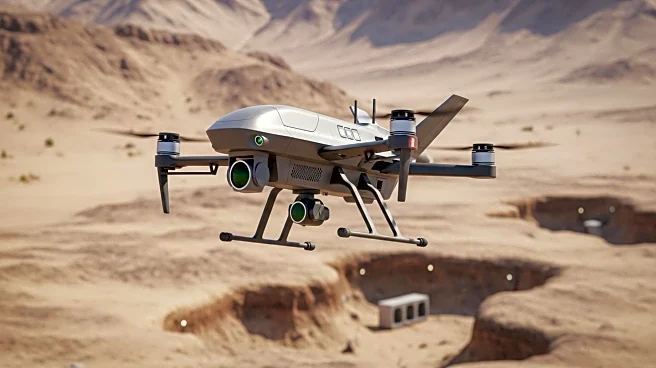What's Happening?
The Israeli Defense Forces (IDF) have used tear gas against boys throwing rocks in the West Bank, as reported by NBC News. This incident occurs amidst broader developments related to a ceasefire deal aimed at ending the conflict in Gaza. As part of the ceasefire agreement, hundreds of prisoners and detained Palestinians are expected to be released. The situation remains tense, with ongoing negotiations and preparations for the release of hostages. The use of tear gas highlights the volatile environment in the region, even as efforts are made to de-escalate the conflict.
Why It's Important?
The deployment of tear gas by the IDF in the West Bank reflects the ongoing tensions and challenges in achieving lasting peace in the region. The ceasefire deal, which includes the release of prisoners, is a significant step towards reducing hostilities, but incidents like this demonstrate the fragile nature of the peace process. The actions of the IDF may impact public perception and diplomatic relations, potentially influencing future negotiations. The situation affects regional stability and has implications for international stakeholders invested in Middle East peace efforts.
What's Next?
As the ceasefire deal progresses, the release of prisoners and hostages is expected to continue, potentially easing tensions in the region. However, incidents like the use of tear gas could provoke reactions from Palestinian groups and international observers, influencing the dynamics of the peace process. Monitoring the situation closely will be crucial for stakeholders, including governments and humanitarian organizations, to ensure the ceasefire leads to meaningful and lasting peace. Further diplomatic efforts may be necessary to address underlying issues and prevent future escalations.












